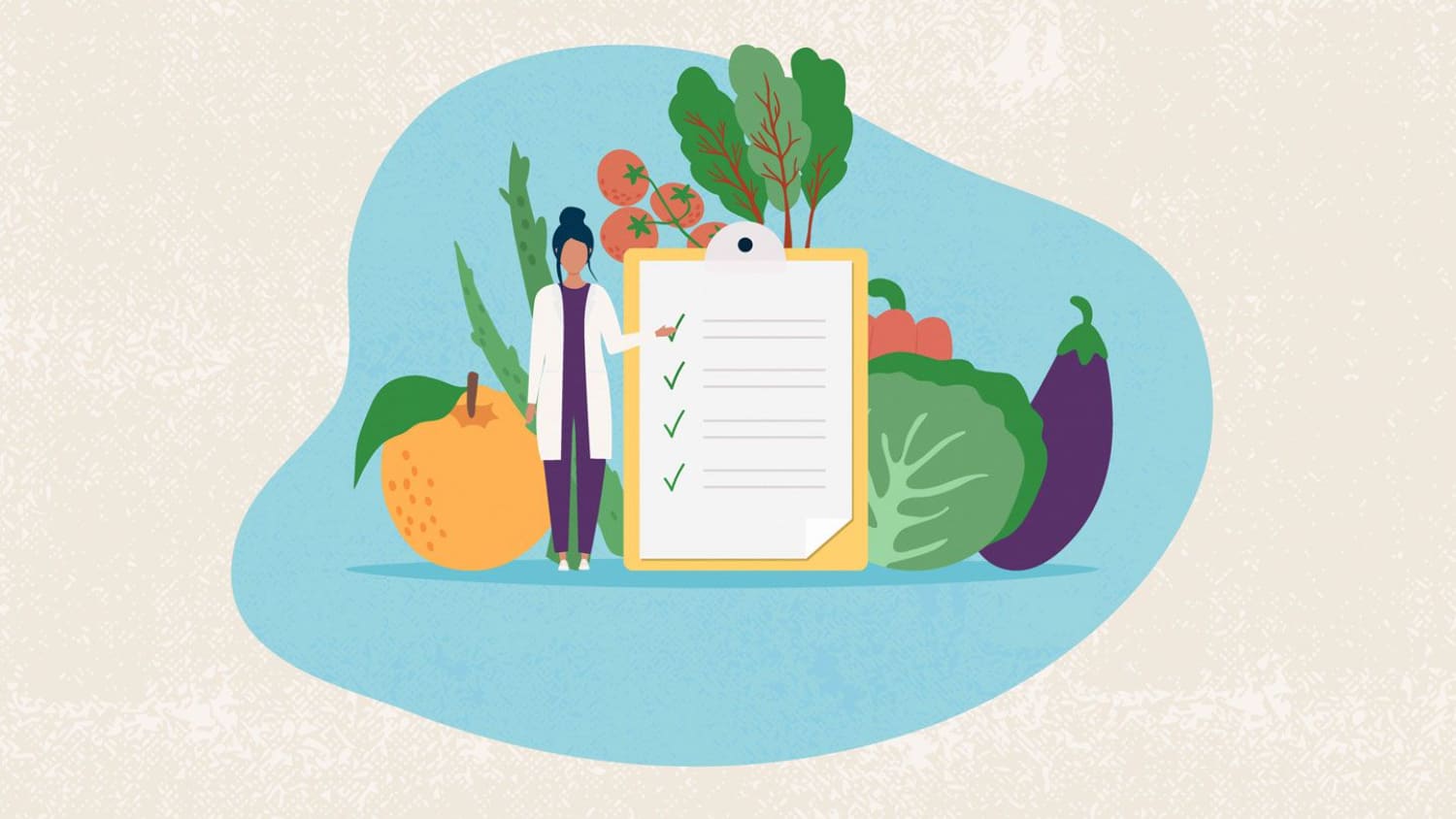Have you ever felt overwhelmed by the plethora of nutrition advice floating around the internet? One article tells you to eat this. Another says to avoid that. It’s a whirlwind of confusion, and it’s easy to feel lost. But what if there was a trusted figure, a beacon in the stormy sea of nutrition information?
What does RD stand for in nutrition? In nutrition, “RD” stands for “Registered Dietitian.” An RD is a certified nutrition expert who meets specific academic and professional requirements.
Enter the RD. This title, often seen but rarely understood, represents a solution to the chaos—a beacon of trust in a world of nutritional noise.
See Also: Nutrition: Activities by Which Organisms Obtain & Use Food
Contents
What is an RD?
What does RD stand for in nutrition? Navigating the world of nutrition can sometimes feel like deciphering a secret code. Amidst the acronyms and titles, “RD” stands out prominently. But what does it mean?
Defining the RD
An RD, or Registered Dietitian, is a champion in the realm of nutrition. They’re not just enthusiasts who love to talk about food; they’re certified experts. An RD undergoes rigorous academic training and supervised practice to earn this title. Their role? To translate the complex science of nutrition into actionable, everyday advice. Whether helping a patient recover with the right diet or guiding a community toward healthier eating habits, an RD is the go-to person.
RD vs. RDN: What’s the Difference?
You might’ve also come across the term “RDN” and wondered how it’s different from RD. Well, here’s the scoop: RDN stands for Registered Dietitian Nutritionist. It’s essentially the same as an RD, with an added emphasis on the term “nutritionist.” Some professionals prefer to use RDN to highlight their expertise in nutrition. However, RD and RDN have the same education, training, and certification standards.
When you see “RD” or “RDN” next to someone’s name, know that you’re in the presence of a nutrition maestro ready to guide you through the maze of healthy eating.
See Also: How to Track Nutrition: Tools and Techniques
Academic and Professional Requirements for an RD
Are you diving into the world of nutrition and considering a career as an RD? Fantastic choice! But, like any esteemed profession, there’s a roadmap of academic and professional milestones to achieve before you can proudly wear the “RD” badge. Let’s break it down.
Degrees Galore: Bachelor’s or Master’s?
What does RD stand for in nutrition? The foundational step to becoming an RD is obtaining a degree in nutrition or a closely related field. While a bachelor’s degree was the traditional route, the landscape is evolving. Starting from 2024, aspiring RDs will need a master’s degree to sit for the certification exam. This shift aims to equip RDs with a deeper knowledge base, ensuring they’re at the forefront of nutritional science.
Diving Deep: The Coursework
Embarking on this academic journey, you’ll immerse yourself in a rich tapestry of subjects. The coursework is designed to be comprehensive, from the intricacies of biochemistry and physiology to the practicalities of food service systems management. You’ll delve into evidence-based nutrition, explore the realms of food and nutrition sciences, and even touch upon areas like sociology and economics. The goal? To mold you into a well-rounded nutrition expert adept at handling diverse challenges.
By the end of this rigorous academic voyage, not only will you be armed with theoretical knowledge, but you’ll also be primed to translate this into real-world solutions. After all, being an RD isn’t just about knowing; it’s about doing, guiding, and transforming lives through the power of nutrition.
See Also: How to Read European Nutrition Labels: A Comprehensive Tutorial
The Path to Becoming an RD
Becoming a Registered Dietitian is akin to setting out on an enlightening expedition. It’s not just about absorbing knowledge from textbooks; it’s about hands-on experiences, real-world challenges, and molding oneself into a beacon of nutritional wisdom. Let’s walk through this path step by step.
Accreditation Matters: Choosing the Right Program
The first pitstop? Selecting an accredited program. Not all nutrition programs are created equal, and accreditation ensures that the curriculum meets the gold standard set by the nutrition community. These programs are rigorously evaluated by bodies like the Accreditation Council for Education in Nutrition and Dietetics (ACEND) to ensure they provide top-notch education. Upon completion, students receive a verification statement, a testament to their readiness for the next phase.
The Crucible: Supervised Practice and Internships
Theory is vital, but practice hones expertise. Before donning the RD mantle, aspirants must undergo supervised practice. This phase is where the rubber meets the road. Under the guidance of seasoned professionals, students apply their academic knowledge, tackle real-world challenges, and refine their skills.
Internship Varieties: DI, CP, and ISPP
The world of internships in the RD realm is diverse, catering to different needs and career aspirations:
- DI (Dietetic Internship): A traditional route, the DI is a post-baccalaureate program focusing on hands-on training. It bridges academic learning and professional practice, ensuring students are ready for the real world.
- CP (Coordinated Program): A two-in-one package combining academic coursework and supervised practice. It’s an integrated approach, allowing students to transition from classroom learning to hands-on experiences seamlessly.
- ISPP (Individualized Supervised Practice Pathway): Tailored for those who’ve missed out on the DI match or hold a doctoral degree, the ISPP offers a flexible route to gaining supervised practice experience.
Each of these internships, though distinct, shares a common goal: to mold students into competent, confident, and compassionate RDs ready to make a mark in the world of nutrition.
See Also: How to Create Nutrition Facts Label: DIY Guide
The Commission on Dietetic Registration (CDR) Exam
What does RD stand for in nutrition? Becoming a Registered Dietitian combines academic rigors, hands-on experiences, and personal growth. But there’s one final hurdle to cross, a rite of passage that solidifies one’s place in the RD community: the CDR exam, often called the “RD exam.” But there’s one final hurdle to cross, a rite of passage that solidifies one’s place in the RD community: the CDR exam.
A Glimpse into the CDR Exam:
The CDR exam, administered by the Commission on Dietetic Registration, is the gateway to the RD credential. Think of it as the culmination of all the knowledge, skills, and experiences garnered during the academic and internship phases. It’s not just a test; it’s a validation of one’s readiness to serve as a trusted nutrition expert.
Diving Deep: Exam Content and Structure
The CDR exam is meticulously designed to assess a candidate’s comprehensive understanding of dietetics. The subjects span a wide spectrum:
- Principles of Dietetics (21%): This section delves into the foundational concepts of nutrition and dietetics, ensuring a strong base.
- Nutrition Care for Individuals and Groups (45%): A significant chunk of the exam, this segment evaluates one’s ability to provide personalized nutrition advice and cater to diverse populations.
- Management of Food and Nutrition Programs and Services (21%): Beyond individual care, an RD must manage larger programs. This section tests those administrative and organizational skills.
- Foodservice Systems (13%): From understanding food production to ensuring safety standards, this part assesses one’s knowledge of the broader food service landscape.
The exam, lasting two and a half hours, comprises up to 145 questions. It’s a blend of theoretical knowledge and practical scenarios, ensuring that those who pass are ready to wear the RD badge proudly.
State Licensing and Certification
What does RD stand for in nutrition? In nutrition and dietetics, the title of “Registered Dietitian” is a badge of honor, symbolizing expertise, dedication, and a commitment to excellence. But to truly validate their expertise, RDs often pursue various registered dietitian certifications. Beyond the rigorous academic and professional milestones, there’s another crucial aspect that RDs must navigate: state licensing and dietitian certification.
The Imperative of State Licensing
While the RD credential is a testament to one’s competence in the field, state licensing adds another layer of credibility. It’s a state’s seal of approval, ensuring that RDs meet specific standards set by the region they practice in. This licensing not only protects the profession’s integrity but also safeguards the public. It ensures that individuals receive care from qualified professionals who adhere to the highest standards of practice.
The Journey to Licensure: Obtaining a state license is a systematic process:
- Eligibility: First and foremost, RDs must showcase their credentials, including their academic qualifications, supervised practice, and successful completion of the CDR exam.
- Application: Aspiring RDs must submit a comprehensive application to the state’s licensing board, often accompanied by relevant fees.
- Continued Education: The world of nutrition is ever-evolving. To ensure RDs stay updated, many states mandate periodic continued education. This commitment to learning ensures RDs remain at the forefront of nutritional science.
- Renewal: Licenses aren’t a one-time affair. RDs must renew them periodically, showcasing their continued adherence to state standards and commitment to professional growth.
In essence, state licensing is more than just a bureaucratic step; it’s a testament to an RD’s dedication to excellence, ensuring they deliver the best care to those they serve.
See Also: How to Become a Nutrition Response Testing Practitioner: A Detailed Guide
RD vs. Nutritionist: Decoding the Distinctions
In the bustling world of health and nutrition, two titles often pop up, sometimes interchangeably: Registered Dietitian (RD) and Nutritionist. While both roles revolve around food and nutrition, they’re not identical twins. Let’s dive into the nuances that set them apart.
The Core Differences:
- Education and Training: An RD undergoes a structured academic learning path, supervised practice, and a rigorous exam. They’re equipped with a deep understanding of the science behind nutrition. Nutritionists might not always have such structured training. Their education can vary widely, from formal degrees to short courses.
- Scope of Practice: RDs are trained to diagnose and treat nutritional problems, tailor diet plans for specific medical conditions, and offer evidence-based dietary advice. Nutritionists primarily focus on general nutrition guidance, often without the clinical aspect.
- Regulation: The title “Registered Dietitian” is protected by law. Only those who’ve met the stringent criteria can use it. The term “nutritionist” isn’t always regulated, meaning its use can be more widespread without standardized credentials.
Legal Protections and Credentials
The world of nutrition is rife with misinformation. Legal protections are in place to safeguard the public and ensure they receive accurate advice. The RD credential is legally protected. Only those who’ve met the specific governing body requirements can use the title in many regions. This legal shield ensures that when someone consults an RD, they interact with a certified expert.
Depending on the region, nutritionists might have different legal protections. While some states regulate the title, ensuring only qualified individuals use it, others are more lenient.
While RDs and nutritionists play pivotal roles in guiding individuals toward healthier eating habits, their paths, expertise, and legal standings differ. When seeking advice, it’s essential to understand these distinctions to make informed choices.
Career Opportunities and Benefits for RDs
What does RD stand for in nutrition? The world of nutrition is vast, and Registered Dietitians (RDs) shine brightly within this expanse. Their expertise, backed by rigorous training, opens many career opportunities.
Diverse Roles of RDs:
- Clinical Dietitians: In hospitals or healthcare settings, they craft patient nutrition plans, aiding recovery and managing chronic conditions.
- Community Dietitians: These RDs educate the public, promoting healthier lifestyles and preventing diseases through community programs.
- Management Dietitians: Overseeing large-scale food operations in institutions, they ensure nutritious meals are served while managing budgets and teams.
- Consultant Dietitians: Operating independently, they offer expertise to individuals or organizations, from athletes to food companies.
A Flourishing Field
The demand for RDs is on the rise. As society becomes more health-conscious and recognizes nutrition’s pivotal role in well-being, RDs are increasingly sought after. Employment growth for dietitians and nutritionists is projected to grow faster than the average for all occupations. Additionally, the median annual wage for RDs is competitive, reflecting the value they bring to the table.
FAQs
Is there a difference between a Dietitian (RD or RDN) and a Nutritionist?
While both focus on nutrition, an RD or RDN has met specific academic and professional requirements established by the Commission on Dietetic Registration. In contrast, 'nutritionist' isn't always regulated, meaning its use can be more widespread without standardized credentials.
What is a Registered Dietitian (RD)?
An RD is a food and nutrition expert who has met the academic and professional requirements established by the Commission on Dietetic Registration.
What subjects are focused on in RD courses?
RD courses emphasize evidence-based nutrition, nutritional therapy, community nutrition, applied principles, and food service systems.
How does an RD differ from a Licensed Dietitian (LD)?
An RD is recognized nationally, while an LD is a state-specific licensure. Both titles indicate the individual has met specific academic and professional standards in dietetics.
What is the job outlook for dietitians?
The U.S. Bureau of Labor Statistics predicts job opportunities for dietitians to increase by 8% between 2019 and 2029 due to the growing awareness of diet's effects on health.
Conclusion
Registered Dietitians emerge as the unsung heroes in the intricate tapestry of health and wellness. Their profound knowledge, coupled with a genuine desire to make a difference, positions them as invaluable assets in nutrition. Whether you’re seeking guidance on a healthier lifestyle or considering a career in nutrition, RDs are the torchbearers, illuminating the path with evidence-based advice. As we navigate the ever-evolving landscape of health, let’s champion the RDs, the true custodians of nutritional wisdom.
See Also: How Nutrition Works: A Beginner’s Guide to Understanding

Dr. Karen Gill is an ABMS board certified pediatrician whose expertise includes breastfeeding, nutrition, obesity prevention, and childhood sleep and behavior issues. She currently lives and practices in Portland, Oregon, where she also volunteers for CASA for Children and the Red Cross.











